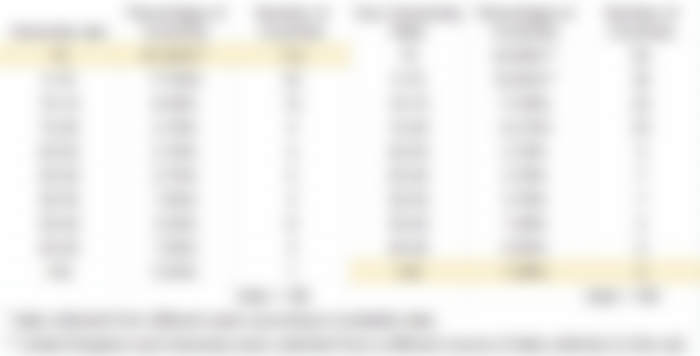Are Guns to Blame?

(image source: https://www.pexels.com/photo/weapons-on-a-table-5202438/)
The US has been embroiled in a debate over gun control in recent years, with calls for stricter national gun regulation being brought into the spotlight once again over a tragedy that happened in Highland Park on July 4th 2022. Polls even show that the majority of Americans support gun control. So there's a question that must be asked: is this push for gun control grounded in truth or is this a case where fear has built up a false view of reality?
I took a look at the data, using FBI statistics gathered by Disaster Center as well as the World Population Review (here and here) to obtain statistics on guns and homicide, although some gun ownership rates I had to go to Gun Policy to get the numbers (here and here). But before I show statistics, I’d just like to make sure we’re on the same page. For one, different countries may count homicides differently, some bundling accidental manslaughter in with the homicide rates, as well as some countries likely false reporting their numbers or including suicides in their homicide rates, but the reports are what we have to go off of, just know that some countries data you might want to take with a grain of salt. Secondly, there’s a reason why I want to focus on general homicide as opposed to gun homicide, and that’s because a tool being more prevalent in one place necessarily means that the use of that tool will represent a greater sum of the data and thus skew the data. A murder is a murder, the tool used doesn’t change that.
So, here’s a graph of the gun ownership rates to homicide rates, with n=185

(Figure 1)

(Table 1)

(Table 2)
As can be seen in Figure 1, countries trend towards less homicide. I color coded the groups of countries based on their homicide rate and collected the data into Table 1. What I found with this is that, of the 185 countries, 61.62%, or 114 countries, had a homicide rate of 5 or less homicides per 100,000 people and 1.08%, or 2 countries, had more than 45 guns per 100 people. We can see in Table 1 that the US is within both of these percentages. But we can go further and look at the countries with the most GDP, which is generally used to determine the countries ranked highest in socioeconomic status.

(Table 3)
Of the high socioeconomic status countries, the US is the 5th highest in homicide, but that’s next to countries that are 107.26% to 586.09% higher in homicide. But one thing on all of these lists brings up something: the US is among the group with the lowest homicide rate yet, according to the Small Arms Survey, it has almost 100 times more guns than its own military and almost half of the global civilian firearms combined. This places the US civilians as the most armed group on earth with more guns than all militaries and law enforcement combined. To give the numbers, global civilian arms total about 857 million, global military arms total about 133 million, and global law enforcement military arms total about 23 million. But who tends to own guns? I’ll present a few figures which I’ll be referencing from multiple sources.

(Table 4)

(Table 5)
In Table 4 we can see that gun owners tend to have a greater belief in a dangerous world. What this means is that in gun owners more than nonowners, the world, generally, is a more dangerous place. This doesn't mean that nonowners do believe most in a just world, although the inference could be made. But this does inform us as to why, for gun owners, the justification of self defense as a reason for ownership is high. Looking at Table 5, we can see that racial resentment is the most negatively correlated to both gun ownership and gun quantity, so we can see that any fears that gun owners are racist is not founded in the data. The highest correlate to gun ownership is being a southerner and the highest correlate to gun quantity is childhood socialization.
Swanson et al found that 8.9% of people with self reported patterns of impulsive angry behavior (IAB) own firearms and 1.5% carry outside the home. To put into perspective how prevalent this is likely to be, Kessler et al tells us that 5.9% of Americans are likely to have intermittent explosive disorder (IED). This places about 19.64M Americans as having IED. Of this 19.64M, about 1.75M Americans have IED and own a gun, and about 294,600 carry a firearm outside the home. This gives us 0.53% of Americans having IED and owning a gun, and 0.09% having IED and carrying a gun outside the home. With the Swanson et al study not focusing specifically on IED, though, and simply presenting those with self reported patterns of IAB, which includes reports of regularly getting angry, throwing tantrums, and getting into physical fights due to anger, this number isn’t an exact. Would’ve been nice if Swanson et al provided a percentage of people reporting patterns of IAB vs those that don’t, and maybe I have simply missed it which you can roast me in the comments if I did. Would’ve also liked to see a comparative study of gun owners to nonowners reporting patterns of IAB - again, roast me if I just missed it in the study. But this gives us a good idea that worries of anger and gun ownership are worries over a population so small as to be considered insignificant compared to the 31.9% of Americans that own firearms.
Other studies show that individualists are more likely to own a gun and more fears correlate to less gun ownership by a factor -5% per point index of fear. Taking in the whole of the data, gun owners are likely to be higher in belief in a dangerous world, southerners, low in racial resentment, rightwing, individualists, with less fears. Two of these are quite jarring from what I, and likely many others, hear about gun owners. The way I normally see them presented in discussions about gun ownership is that gun owners are racists and are afraid of their own shadows. But the data shows that both of these positions are faulty at best, lies at worst.
So now we know more about who owns guns, so what about claims that more guns equates to more crime? Well, if you scroll back up and look at the data presented in Figure 1 and Table 2, we can see that this fear is also unfounded. We see that the trend is towards less homicide with higher gun ownership, not the other way around. But do we have more data to confirm this? Kleck (2015) looked at 41 studies, finding that most studies didn’t directly measure gun violence but self harm and of the 6 studies that met the criteria and controlled for 5 or more variables, none of them could find any evidence that increased gun ownership led to an increase in violence. In fact, the 11 studies that did look into the causal relationship found the correlation was the opposite, finding that increased crime correlated with increased gun ownership instead.
But what about mass shootings? Surely more gun laws would prevent mass shootings! Well, Towers et al looked into that. They looked at a number of incidents and found that shootings happen on average every 12.5 days and school shootings specifically every 31.6 days. Of course, any violent event is one too many, but did they find that guns laws were effective at preventing mass shootings? Well, not exactly. While mass shootings themselves are more likely when there are more guns, they could not find that gun laws influenced the rate of violence, including mass violence.
We’ve taken a look at where the US sits on the world stage, showing that it’s not exceptional when it comes to homicide. We’ve taken a look at who owns firearms, showing that, while some things fall in line with what’s expected, gun owners aren’t who they are portrayed as. And we’ve looked at guns and gun laws and how they relate to crime, showing that guns and gun laws don’t have an effect on violence, but violence has an effect on guns and gun laws. This isn’t even getting into the racial disparity of violent crime or that the fastest growing group of gun owners in the US are black women.
Media framing has shaped the activist response to guns, but as we can see with the evidence, it’s not founded in reality. Instead of focusing on the tool by which one engages in violence with, we should focus on finding out why they engage in violence in the first place.







we cannot blame our weapons for fighting, but what we have to prepare is our readiness to fight.